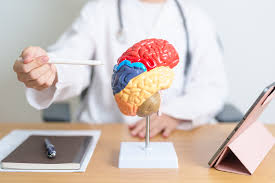Paediatric Bone Marrow Transplant



Paediatric brain tumours refer to abnormal growths of cells situated in a child’s highly fragile neural tissue. Unlike their adult counterparts, paediatric brain tumours result mainly from neurodevelopmental pathology and less from continual cell exposure to exogenous etiological agents over time. Paediatric brain tumours have vast variations in their histological types, location in the brain, and clinical behaviour. They can also be primary in the brain and spinal cord or secondary, where the tumour has metastasized solely from another organ.
Learn more about Paediatric Brain Tumour
Primary immunodeficiency disorders (PI) are a group of over 300 genetic disorders that impair the immune system’s ability to defend against infections. Individuals with PI have defects in the cells or proteins that make up the immune system, leading to frequent, severe, or unusual infections. Symptoms can range from mild to severe and may include recurrent respiratory infections, gastrointestinal issues, skin infections, and failure to thrive in infants. Diagnosing PI often involves a combination of clinical evaluation, family history, and specialized laboratory tests. Treatment varies depending on the specific disorder but may include immunoglobulin replacement therapy, antibiotics to prevent and treat infections, and in some cases, hematopoietic stem cell transplantation to correct the underlying immune defect.

Leukaemia is a type of blood cancer that affects the white blood cells. It primarily starts in the bone marrow, the site where blood cells are produced. The most common types of leukaemia acute lymphoblastic leukaemia (ALL), acute myeloid leukaemia (AML), and chronic myeloid leukaemia (CML). It is crucial to consult a doctor for accurate diagnosis and treatment options specific to the type you might have.
Learn more about Leukaemia
Aplastic anaemia is a rare but serious disorder that disrupts the bone marrow's ability to produce enough blood cells. This malfunctioning bone marrow leads to deficiencies in red blood cells (causing fatigue), white blood cells (increasing infection risk), and platelets (raising the risk of bleeding). Aplastic anaemia has no universal cure, but treatments like blood transfusions and medications can help manage symptoms. In some cases, a stem cell transplant may offer a potential cure.
Learn more about Aplastic Anaemia
Our superspecialist doctors provide the highest quality of care through a team-based, doctor-led model. Trained at some of the world's most renowned institutions, our highly experienced doctors are distinguished experts in their respective specialities. Our doctors work full-time and exclusively across Medanta hospitals. In addition to offering superspecialised care in their own field, the Medanta organisational structure enables every doctor to help create a culture of collaboration and multispecialty care integration.
Our superspecialist doctors provide the highest quality of care through a team-based, doctor-led model. Trained at some of the world's most renowned i..... Continue Reading












